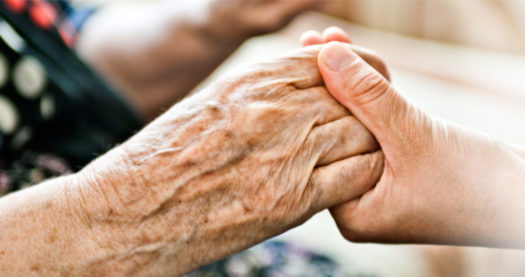Getting used to an assisted living situation does require an adjustment – not only for the resident but the family members, too. It is not unusual for the resident to be angry in the beginning. This is especially true for those loved ones that suffer from memory issues. They will often feel very confused and lost. The caregivers and nurses at a memory care facility are trained to handle an upset resident. These tactics usually involve some type of diversion.
I found it especially helpful to attend a family support group the first couple of months that Mother was in assisted living. The responsibility and guilt that family members go through can be overwhelming. It was interesting to hear about everyone’s story and experience. Although everyone was different, much of the issues were the same: a spouse that feels so guilty about leaving their loved one behind, the stress of being yelled and cussed at for putting them in this place, and the financial responsibility of paying for two different residences.
Mother understood where she was and why she was there. She had to warm up to participating in activities. I encouraged the social directors and caregivers to make sure she was involved in the various activities. It was important that she develop a routine of getting out of bed every morning, getting dressed with full makeup and jewelry, eating meals in the dining room, and socializing. Attempting to get her life as normal as possible, I felt, was of great importance in Mom’s recovery. One small thing that meant a great deal to her was to get her hair done in the salon every week.
She also began another 6 weeks of therapy. It was a goal to keep the momentum of improvement she had started at the acute care rehab.

Scooting across a bed or bench, standing up and maintaining her balance for 10 minutes, keeping her paralyzed right arm and hand flexible, working her brain in order to improve her speech, and improving her ability to read and write were important in her recovery. After that round of therapy, she had shown great improvement.
As the holidays approached, decisions needed to made in regards to how we could celebrate them with Mother. We requested and were approved to get a couple more weeks of therapy to train myself and one of Mother’s granddaughters on transfers. We wanted to be able to take Mom out and that meant learning how to move her from wheelchair to car and back. We also had to learn how to get her in and out of bed and in and out of the bathroom.
After about three weeks of twice-a-week training, I took Mom out to lunch in a restaurant. She was so excited and was waiting at the door when I arrived! We had a nice afternoon of shopping and lunch. The next big event was to bring her home for an overnight stay. We did that on Thanksgiving night. I will not say that it was easy. There were definite challenges and it is a lot of work. I took me two hours to get her up, showered, dressed, and hair done. Due to all this, the family decided to hire an in-home caregiver at Christmas. (In a later blog, I will discuss in-home caregivers.)
As the next few months go by, Mother’s verbal improvements were great. She was happier and we were able to reduce her medications in half. This was very important to Mom. She was put on an anti-depressant medication within a couple of weeks of admission in the skilled nursing facility. She complained that it was making her “foggy” and she objected to taking it from the very beginning. I refused it at first, but the nurses and therapists insisted that it was necessary. The ability for Mom to get out and do normal things also helped her improve. Her verbal accuracy was over 80% at the 8th month mark.
The cons of the living situation for Mom was that she was getting extremely bored with the mundane and repetitive routine day after day. She would often cry and express her desire to spend more time away with me. She missed her friends and her social life. When her physical therapy ended, her exercise was reduced to almost nothing. She began to lose some of her strength. Also, once Mother was up and dressed, she could move about on her own with little assistance within the facility. Due to this fact, the caregivers would mostly ignore her much of the day. More dependent residents got their attention. If Mother didn’t want to wear her brace or put her armrest on her chair, which was important to maintain her flexibility, the caregivers didn’t insist. The result was a slight regress in her condition.
All of this help lead me to the conclusion that talking to Mother about living at home with me, with the assistance of in-home caregivers, might be in her best interest. Stay tuned on her reaction and what happened next ……

